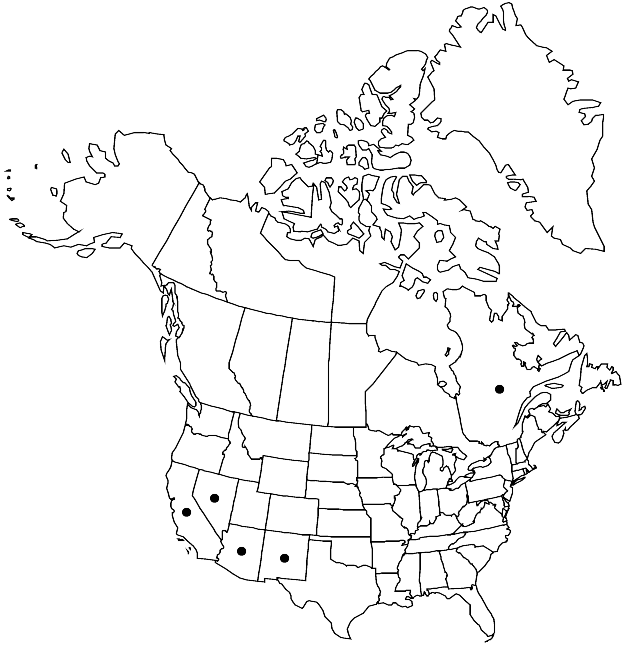Difference between revisions of "Gemmabryum demaretianum"
Phytologia 89: 111. 2007.
FNA>Volume Importer |
FNA>Volume Importer |
Revision as of 19:44, 24 September 2019
Plants small, green or yellow-green, often with reddish tinge. Stems 0.4–1(–1.5) cm; rhizoids hyaline, pale yellowish brown, or red-brown. Leaves loosely set, ovate-lanceolate to ovate, weakly concave, 0.6–1.5(–2) mm; base not decurrent; margins plane to weakly revolute basally, entire to serrulate distally, limbidium absent or indistinct, of 1 or 2 rows of elongate, incrassate cells; apex acuminate; costa percurrent to short-excurrent, awn slender; alar cells similar to adjacent juxtacostal cells; proximal laminal cells gradually rectangular, 2–4:1; medial and distal cells 50–70(–80) × 12–20(–24) µm, 3–4:1. Specialized asexual reproduction by rhizoidal tubers, in clusters of 2–5 on short lateral rhizoids of main rhizoids at base of stem, yellow to orange-brown, pyriform, 80–150(–170) µm, cells 25–50 µm, smooth to slightly protuberant but not distinctly so. Sexual condition dioicous. Capsule unknown.
Habitat: Disturbed soil of agricultural fields, landscaped or disturbed sites
Elevation: low elevations (0-100 m)
Distribution

Que., Ariz., Calif., Nev., N.Mex., c, w Europe.
Discussion
The many medium-sized yellow to orange rhizoidal tubers in clusters on short rhizoids at the stem base are diagnostic of Gemmabryum demaretianum. In the flora area, this species is probably introduced.
Selected References
None.